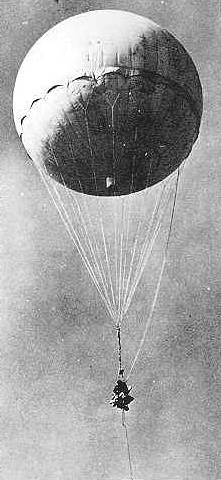I am an avid podcast consumer, and I was walking and listening to one particular podcast that struck me as postmodern horror happening in the real world way before its time.
The podcast I was listening to was Radiolab by NPR, the episode entitled “Fu-Go”. You can listen to it here.
The story is about the Japenese hoping to rain terror down on the United States as retribution for some air force attacks the US conducted after Pearl Harbor. The Japenese military was stretched so thin during WWII that they couldn’t commit troops to go and attack the U.S., so they put their minds to work, and came up with this:

A bomb, a very special bomb. The huge helium balloon is big enough to carry it in the Jet Stream, a tunnel of air that can take objects from Japan and carry them all the way over to the West Coast of the U.S. Attached are sandbags, which loosen when the balloon floats too low, allowing it to stay in the wind current. When all the sandbags were gone, it dropped bombs.
Here’s a map of how the balloons got to the U.S. and where they were found or seen in North America. Imagine the horror of the people felt seeing the balloons and watching them cause explosions. No one knew where they were coming from until scientists analyzed the sand inside the sandbags and the fabric used for the balloons.

While these bombs never created the true terror that the Japenese were hoping for, in its own way, they are a kind of technological monster that follows some of the disaster scenarios that Susan Sontag lays out in her essay. This thing, this strange balloon, arrives, but no is sure quite what it is or what it does. And it was not until the bombs start blowing up near big cities that the military took it seriously and started investigating where they came from. There is also a hero of some kind in this story: a sheriff that sees one of the balloons and wrangles it to stop it from flying away, which finally allows the military to find out what it is. And while there is no ultimate weapon needed to attack Japan, this real-life version of creating a disaster horror does follow some of the main points typically seen only in fiction.
Similarly, these bombs can fit into Cohen’s “Monster Culture” essay, in Thesis IV, which describes how history itself can become a monster, incorporating the events of real life into a kind of monster. As revenge for America’s destruction to their cities, Japan hoped to introduce their own technologically advanced, mysterious, deathly monster to the United States.
To learn more about the Fu-Go bombs, visit NPR History, the History Channel, and Project 1947.
